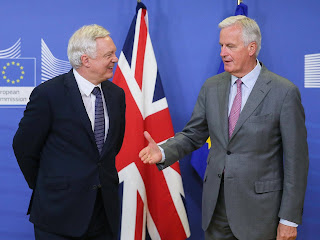| Credit: Ville Hyvonen |
"Did he fire six eshots or only five?" Well, to tell you the truth, in all this excitement I kind of lost track myself. But being as this is a trigger email, the most powerful email in the world, and would blow your target clean off, youve got to ask yourself one question: "Do I feel lucky?" Well, do ya, punk?
There it is - Ive just glamorised the humble trigger email to such an extent youre now thinking of Clint Eastwood in one of his finest moments in cinematic history, that is Dirty Harry.
The point is.. you dont actually have the benefit of five or six shots at getting your email performance to smash the target, because your first email is the one that counts.
But before we get into that, look at these common tactics that guarantee to totally screw up your first shot at email:
- Delay sending your first email in real-time [late]
- Only to ask people to reconfirm their opt-in [wasteful]
- Include a tonne of product/company information which doesnt excite, add value to stimulate the receiver to take action [boring]
Instead use this quick checklist below as a bare minimum to exploit this one-off marcomms opportunity to the max:
- Real-time send - nothing else matters!
- Include a fab offer - kick things off with a super discount first time only deal. The first purchase is always the hardest to drive
- Personalised and content driven - this email is the first of many so tone, style and content must 100% engage with the reader if the relationship is going to continue
The aim is to thrill and delight in equal measure. 80% of trigger emails I receive are about as thrilling as a ride on a bus (when we need to be put on a rollercoaster)!
Performance-wise, (done well) trigger emails deliver:
- Open rates of 50%+ (my all time record is 98% for a luxury fashion brand)
- Click rates of 10-30% - the range is geared towards how effectively steps 1-3 above have been deployed
- Conversions of 3-6% - Of course varies wildly depending on CTA, but 4% is doable for mid-range e-commerce
Post trigger, email performance settles down to 20%+ open / 8%+ click range for email newsletters as regular emails battle it out for attention in the busy inbox.
So to recap, the humble trigger email carries two (often overlooked) stupendous abilities:
- Record-breaking email stats (youll never see a regular email perform this well, ever...)
- Enable a high performing eCRM programme for life
If trigger emails still dont excite you - check out Clint Eastwood in this classic scene from Dirty Harry to get your blood pumping.


